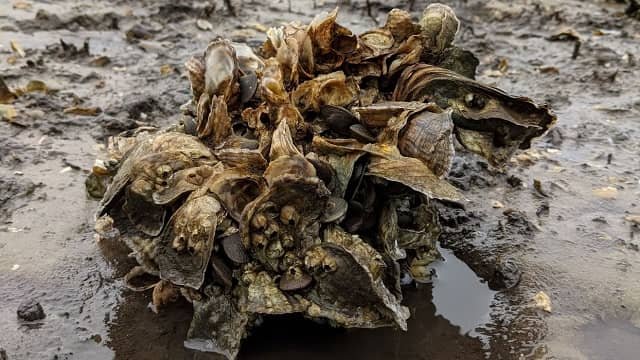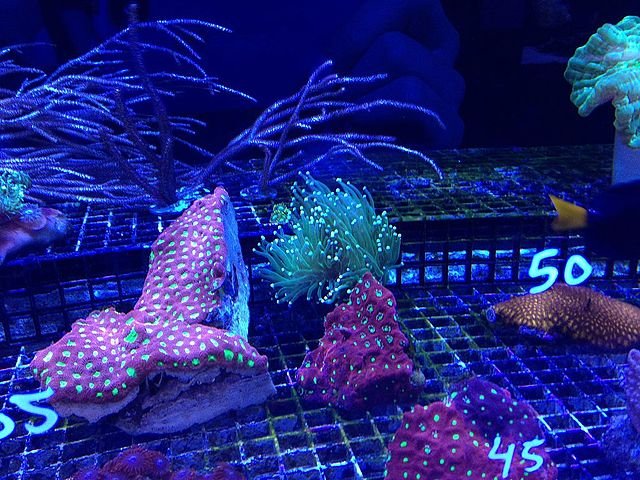
Various studies have projected that by the year 2040, extreme heatwaves in the ocean will triple, posing a significant threat to marine ecosystems and the survival of aquatic organisms.
Bivalves are vulnerable to heat stress, and their growth can be negatively affected by high temperatures, leading to mass mortalities and posing a threat to ecosystem quality and food security.
Scientists from Guangdong Ocean University published a scientific review providing a detailed examination of the effects of heat stress on bivalves.
The study summarizes the physiological and biochemical changes that occur in bivalves in response to extreme heat events and offers an overview of strategies employed to mitigate their impacts.
Heat stress in bivalves
Heat stress in bivalves can manifest acutely or chronically, with acute stress resulting from sudden increases in environmental temperature, and chronic stress arising from prolonged exposure to high temperatures.
The main impacts of heat stress on bivalves include cellular damage and oxidative stress, leading to impaired immune function, elevated inflammation, changes in microbial populations, and reduced growth.
Marine heatwaves
Marine heatwaves, also known as marine heat extremes, are characterized by sustained increases in seawater temperature and have become more frequent and intense in recent years.
According to experts, the fundamental cause of marine heatwaves is long-term anthropogenic change, which has led to a steady increase in ocean temperature.
Marine heatwaves have a devastating impact on ecosystems, resulting in mass mortality events and other adverse effects. Particularly, sessile species such as bivalves, corals, algae, and sponges are especially vulnerable to acute thermal stress.
Stay Always Informed
Join our communities to instantly receive the most important news, reports, and analysis from the aquaculture industry.
How heat stress affects bivalves
According to projections, heat stress will become more prolonged and frequent, affecting coastal habitats, particularly intertidal species living near their temperature tolerance limits.
An increase in temperature at the tolerance limits of each organism can accelerate various biological processes, including metabolism, development, filtration rate, and absorption efficiency.
On the other hand, acute and rapid temperature increases can cause more substantial stress, resulting in sublethal and lethal effects.
Effects of heat stress on behavior
Bivalves have behavioral reactions to preserve central body homeostasis as a first line of defense. Whether cold or heat stress, maintaining homeostasis requires balancing heat production and loss.
Heat stress frequently triggers behavioral responses and, under exceptional circumstances, can be fatal.
Influence of heat stress on bivalve growth
Both biotic and abiotic factors influence the growth and size of organisms. Among abiotic factors, temperature plays a critical role. It is responsible for a well-established response known as the “temperature-size” rule, where body mass decreases as temperature increases.
Temperature also has significant impacts on bivalve growth, spawning, and larval development. The success of larval spawning and bivalve growth largely depends on the optimal temperature range.
The average duration of heat stress required to have a noticeable effect on bivalve growth may vary depending on the species, intensity and duration of heat stress, and other factors such as salinity, nutrient availability, and human activities.
Impacts on energy metabolism in bivalves
Stability in energy balance is essential for adaptation to stress situations and the development of tolerance.
The ability for continued existence and productive behavior, as well as the ability to adapt and tolerate stress, is closely linked to their energy metabolism. Effective energy management is crucial for maintaining overall health of an organism.
When exposed to heatwave simulations, bivalves were able to slow down the increase in filtration and respiration rates, helping them cope with the additional energy demand that could not be met through respiration alone.
Challenge to immunity due to heat stress exposure
The development of pathogens, disease spread, and vulnerability in bivalves has increased due to climate change in the past century. Due to rising temperatures, parasites have become more prevalent in bivalves.
Rapid temperature increases affect the immune system’s ability to function effectively.
Mechanisms of heat stress tolerance
Avoidance behavior
For benthic species, the only way to “escape” heat stress is by moving to cooler areas, changing their burrowing habits, or utilizing natural geomorphological features.
Phenotypic flexibility
The ability of an individual to adapt through phenotypic flexibility allows them to maintain performance and physical fitness under unpredictable conditions.
In a rapidly changing environment, individuals that show constant but reversible changes in behavior, physiology, and morphology are more likely to be selected.
Multiple studies show that adults can undergo substantial but reversible phenotypic changes.
Mitigation measures for heat stress tolerance
Conventional breeding strategies
Researchers report that conventional breeding practices, including selection and hybridization, have been found to reduce genetic diversity in domesticated and selected traits.
This highlights the importance of separating genetic variability in wild and cultured bivalves to enhance their performance under stress. A crucial step towards achieving this is gaining a better understanding of genetic variation in different species.
Omics Approaches
Bivalves exhibit complex responses to heat stress, which are only beginning to be understood through omics techniques. These methods have allowed the identification of several heat stress genes through gene expression analysis and genetic screening in different bivalve species.
Recent technological advancements, such as microarray analysis and transcriptomics, have enabled researchers to investigate patterns of gene expression in response to heat stress.
Conclusion
“The impact of heat stress on the aquaculture industry is becoming an increasing concern worldwide,” the researchers conclude.
They also describe how the development, appearance (shell), and function of bivalves can be altered due to exposure to high temperatures, resulting in developmental and growth difficulties.
“Bivalves have developed physiological, biochemical, and structural adaptations to cope with elevated temperatures. However, data from fragmented genetic resources may not accurately reflect the heat stress tolerance of bivalves,” they conclude.
The study was funded by the National Science Foundation of China, the Guangdong Zhujiang Talents Program, the Department of Education of Guangdong Province, the Modern Agro-industry Technology Research System (CARS-49), and the program for Scientific Research Start-up Funds from Guangdong Ocean University.
Contact
Liqiang Zhao
Email: lzhao@gdou.edu.cn
Reference (open access)
Masanja F, Yang K, Xu Y, He G, Liu X, Xu X, Xiaoyan J, Xin L, Mkuye R, Deng Y and Zhao L (2023) Impacts of marine heat extremes on bivalves. Front. Mar. Sci. 10:1159261. doi: 10.3389/fmars.2023.1159261
Editor at the digital magazine AquaHoy. He holds a degree in Aquaculture Biology from the National University of Santa (UNS) and a Master’s degree in Science and Innovation Management from the Polytechnic University of Valencia, with postgraduate diplomas in Business Innovation and Innovation Management. He possesses extensive experience in the aquaculture and fisheries sector, having led the Fisheries Innovation Unit of the National Program for Innovation in Fisheries and Aquaculture (PNIPA). He has served as a senior consultant in technology watch, an innovation project formulator and advisor, and a lecturer at UNS. He is a member of the Peruvian College of Biologists and was recognized by the World Aquaculture Society (WAS) in 2016 for his contribution to aquaculture.




